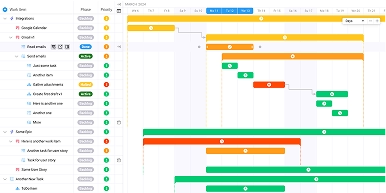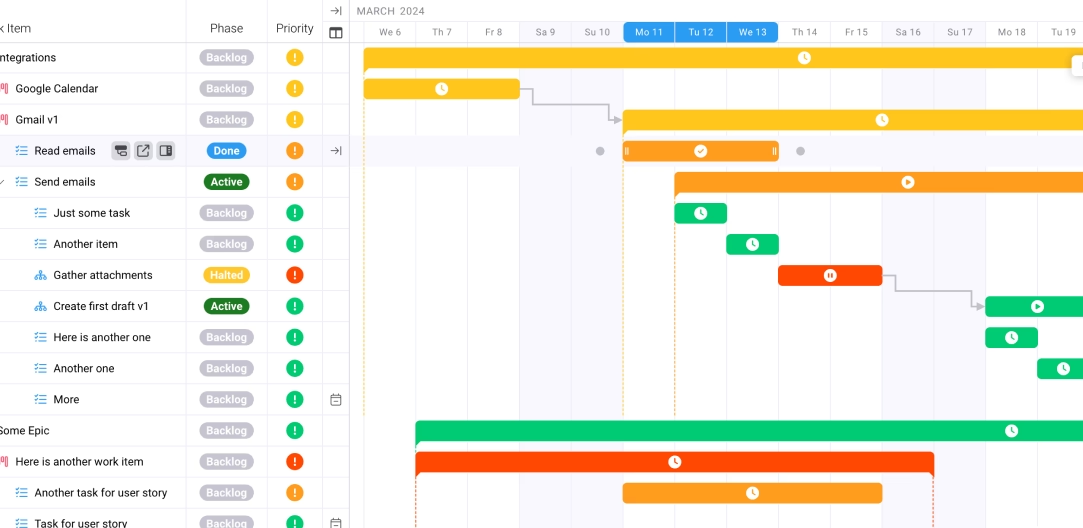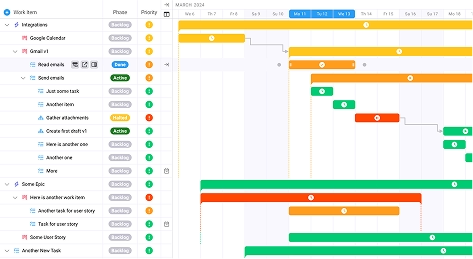
7 Essential Steps for Effective Project Cost Tracking & Management
Key takeaways:
Project Cost Tracking isn't just about counting dollars and cents. When 85% of construction projects experience cost overruns averaging 28%, and even well-managed initiatives face budget challenges, professional services firms need proven frameworks for financial control. This comprehensive guide explores the seven essential steps for effective "7 Essential Steps for Effective Project Cost Tracking & Management," providing actionable strategies that project managers, operations directors, and finance teams can implement immediately to protect margins and deliver profitable projects.
The Current Challenge: Why Project Costs Spiral Out of Control
Financial visibility remains one of the most persistent challenges facing professional services organizations. Research reveals that the average project cost overrun stands at 27% according to Harvard Business Review analysis, while IT projects demonstrate a mean cost overrun ratio of 1.8, meaning projects regularly finish 80% over their initial budgets.
The root causes extend beyond simple miscalculation. Poor scope definition, inadequate estimation techniques, uncontrolled scope changes, and insufficient real-time monitoring create the perfect storm for budget disasters. When 70% of business leaders make critical decisions based on outdated or incorrect financial data, organizations operate with fundamental information asymmetry that makes cost control nearly impossible.
Professional services firms face additional complexities. Unlike manufacturing or retail, service delivery costs fluctuate based on personnel allocation, skill mix, project complexity, and client engagement patterns. Without robust cost tracking systems, agencies and consulting firms essentially fly blind, discovering profitability problems only when projects close and damage is already done.
The financial impact extends beyond individual projects. Persistent cost overruns erode client trust, damage team morale, and ultimately threaten business sustainability. Agencies that fail to master financial management struggle to scale, invest in growth, or weather economic downturns.
Step 1: Establish a Comprehensive Cost Baseline
Effective cost tracking begins before projects start. Establishing an accurate cost baseline provides the reference point against which all actual expenditures are measured. This baseline represents your best estimate of what the project should cost, broken down by phase, work package, and resource type.
Start with detailed resource planning. Identify every role required for project delivery, estimate hours needed for each activity, and apply fully loaded rates that include salaries, benefits, overhead, and profit margins. Many organizations make the critical mistake of using only direct labor costs, creating artificially low baselines that guarantee apparent overruns.
Include all cost categories in your baseline. Beyond personnel costs, account for software licenses, third-party services, travel, materials, and contingency reserves. Risk-adjusted budgeting acknowledges that uncertainty exists in every estimate. Most experienced project managers include contingency buffers of 10-20% depending on project complexity and organizational maturity.
Document assumptions underlying your baseline. What scope is included? What deliverables are assumed? Which dependencies exist outside project control? Clear documentation prevents scope creep's insidious cousin: assumption creep, where stakeholders remember different project parameters.
Break down your baseline to match your work breakdown structure. Rather than a single project-level budget, create granular budgets for each phase, deliverable, or work package. This granularity enables more precise tracking and faster identification of variances.
Secure formal approval for your cost baseline from project sponsors and key stakeholders. This approval creates accountability and establishes the agreed-upon financial framework. Without formal approval, baselines remain suggestions rather than commitments.
Step 2: Implement Real-Time Expense Tracking Systems
Retrospective cost tracking identifies problems too late for meaningful correction. Real-time cost tracking enables early detection of budget deviations and allows project managers to respond proactively before variances compound.
Modern project management platforms provide automated expense capture that eliminates manual data entry and reduces error rates. Spreadsheet-based tracking contains a high percentage of user errors, making dedicated software essential for accuracy.
Configure your tracking system to capture multiple cost dimensions. Track both actual expenditures and commitments—purchase orders and contracts represent future costs that affect budget availability even before invoices arrive. Monitor both billable and non-billable time to understand true project economics.
Integrate time tracking directly into daily workflows. The longer the delay between work performance and time entry, the less accurate records become. Mobile-friendly interfaces, browser extensions, and task-embedded timers reduce friction and improve compliance.
Establish clear categorization standards. When team members log time or expenses, they should assign entries to specific projects, phases, tasks, and cost categories. Consistent categorization enables meaningful analysis and prevents the "miscellaneous" category from becoming a data black hole.
Automate expense approval workflows. Define spending authorities by project role and dollar threshold, route expenses to appropriate reviewers, and create audit trails documenting all approvals. Automated workflows accelerate reimbursement while maintaining financial controls.
Connect cost tracking to your billing system. When time entries and expenses flow automatically to invoices, you eliminate duplicate data entry, accelerate billing cycles, and ensure revenue recognition matches cost incurrence.
Step 3: Apply Earned Value Management Methodology
Earned Value Management combines scope, time, and cost measurements in a single integrated system, providing objective performance indicators that traditional tracking methods miss. EVM delivers objective cost and schedule performance metrics that enable accurate forecasting and early intervention.
EVM works by comparing three values at any project point. Planned Value represents the budgeted cost of work scheduled to be completed by a specific date. Earned Value reflects the budgeted cost of work actually completed, showing progress achieved. Actual Cost captures money actually spent.
Calculate critical performance indices from these values. Cost Performance Index (CPI = Earned Value ÷ Actual Cost) reveals cost efficiency. Values above 1.0 indicate under-budget performance, while values below 1.0 signal overspending. Schedule Performance Index (SPI = Earned Value ÷ Planned Value) measures schedule efficiency, with similar interpretation.
Use EVM to forecast project completion costs. Estimate at Completion (EAC = Budget at Completion ÷ CPI) projects final costs based on current performance trends. This predictive capability allows early course correction rather than late-stage surprises. When your CPI sits at 0.85, you know the project will likely finish 18% over budget unless something changes.
Implement EVM progressively if full implementation seems overwhelming. Start with high-value or high-risk projects, establish processes and gain organizational buy-in, then expand to additional projects. Even partial EVM adoption provides more insight than traditional tracking alone.
Train project managers and team leads on EVM interpretation. The methodology's power lies not in calculation but in understanding what metrics reveal about project health and what actions metrics suggest. When SPI drops below 0.90, schedule recovery strategies become urgent.
Step 4: Create Variance Analysis and Reporting Cadence
Tracking costs means nothing without analysis and action. Establish regular variance analysis practices that identify deviations, investigate causes, and drive corrective responses.
Calculate both cost variance (CV = Earned Value - Actual Cost) and schedule variance (SV = Earned Value - Planned Value) at defined intervals. Weekly analysis suits fast-moving projects, while monthly cadence works for longer initiatives. Consistency matters more than frequency.
Investigate variances exceeding established thresholds. A 5% variance might warrant investigation for smaller projects, while larger initiatives might use 10% thresholds. Don't waste time analyzing immaterial variances, but don't ignore patterns of small overruns that cumulatively damage project economics.
Distinguish between different variance types. Timing variances reflect expenditure occurring earlier or later than planned without changing total cost. Rate variances happen when resources cost more or less than estimated. Efficiency variances result from work taking more or fewer hours than budgeted. Each variance type requires different corrective action.
Document variance explanations in project records. When actual costs exceed baseline, capture the reason: scope change, resource rate increase, efficiency issue, estimation error, or external factor. This documentation serves multiple purposes—it explains current project status, informs future estimates, and provides accountability.
Create standardized variance reports for stakeholders. Executives don't need detailed line-item analysis, but they do need clear summaries: Are we over or under budget? By how much? What's causing variances? What actions are being taken? When do we expect resolution?
Use visual dashboards to communicate financial status. Color-coded indicators, trend charts, and exception highlighting help stakeholders quickly grasp project financial health without wading through spreadsheets.
Step 5: Implement Rigorous Change Control Processes
85% of projects experiencing scope creep exceed their initial budgets with an average cost overrun of 27%. Uncontrolled changes represent the single largest threat to project budgets, making change control a non-negotiable element of cost management.
Establish formal change request procedures from project kickoff. All stakeholders should understand that changes require documentation, impact analysis, and approval before implementation. No exceptions for "small" changes or "quick tweaks"—these death-by-a-thousand-cuts modifications destroy budgets.
Create standardized change request forms capturing essential information: description of proposed change, business justification, impacted deliverables, required resources, cost implications, schedule impacts, and risk modifications. Structured requests enable consistent evaluation.
Perform thorough impact analysis for each request. How does this change affect project scope? What additional hours are required? Which phases are impacted? Does it require different skill sets? What dependencies are created? Rigorous analysis prevents underestimating change costs.
Implement formal approval workflows based on change magnitude. Minor changes might require only project manager approval, moderate changes need sponsor sign-off, and major changes demand steering committee review. Define clear authority levels and stick to them.
Update baselines when approved changes occur. The cost baseline should reflect all approved scope, creating accurate comparison for subsequent variance analysis. Many organizations make the mistake of never adjusting baselines, ensuring every approved change appears as an overrun.
Track change requests comprehensively. Maintain a change log showing all requests submitted, approved, rejected, or deferred. Analyze patterns: Which stakeholders request most changes? What types of changes occur most frequently? What's the cumulative cost impact? These insights inform future project planning and client management.
Step 6: Optimize Resource Allocation and Utilization
Labor typically represents 60-80% of professional services project costs, making resource planning optimization essential for cost control. Poor resource allocation destroys budgets through overstaffing, skill mismatches, and utilization inefficiencies.
Implement capacity planning that matches resource supply to project demand. Visibility into who's available, when they're available, and what skills they possess enables optimal project staffing. Underutilization wastes money; overallocation burns out teams and increases errors requiring expensive rework.
Match resource skills to task requirements. Assigning senior consultants to junior-level tasks wastes expensive resources and inflates costs. Conversely, assigning junior resources to complex tasks extends duration and may compromise quality. Right-skilling balances cost-effectiveness with delivery excellence.
Monitor utilization rates as a key performance indicator. Calculate billable utilization (billable hours ÷ total available hours) and overall utilization (all project hours ÷ total available hours). Target utilization varies by role and organization but generally ranges from 70-85% for billable resources.
Address utilization outliers proactively. Consistently low utilization suggests pipeline issues, skills gaps, or organizational inefficiency. Sustained high utilization above 90% signals burnout risk and probable quality issues. Both extremes damage project economics and organizational health.
Implement resource leveling techniques when conflicts arise. Rather than overloading specific individuals while others sit idle, distribute work more evenly. Resource leveling may extend project duration but often reduces total cost and improves delivery quality.
Create cross-functional resource pools where appropriate. When multiple projects need similar skills, shared resource pools increase flexibility and improve utilization compared to dedicated project teams. Effective pool management requires clear prioritization and allocation processes.
Step 7: Leverage Technology and Automation
Manual cost tracking doesn't scale. As organizations grow and project complexity increases, spreadsheet-based approaches become untenable. Project management software centralizes data, automates calculations, and provides real-time insights impossible with manual methods.
Select platforms offering integrated financial management capabilities. The best solutions combine project management, time tracking, expense management, resource planning, and billing in unified systems. Integration eliminates data silos and duplicate entry.
AI-powered predictive budgeting represents an emerging trend in 2025, enabling organizations to leverage historical data for more accurate estimates. Machine learning algorithms identify patterns in past projects, flag risks based on similar initiatives, and suggest budget adjustments based on current performance trends.
Implement automated alerting for budget thresholds. Configure systems to notify project managers when actual costs reach 75%, 90%, and 100% of budget, when cost variance exceeds defined tolerance, or when burn rates indicate probable overruns. Automated alerts enable intervention before problems escalate.
Use workflow automation to streamline approval processes. Automatic routing of timesheets, expense reports, change requests, and purchase orders based on predefined rules accelerates decisions while maintaining controls. Approvers receive notifications, review via mobile devices, and approve with single clicks.
Integrate cost management platforms with accounting systems. Bi-directional data flow between project management and ERP or accounting software ensures financial data consistency and enables comprehensive business reporting. Integration eliminates reconciliation headaches and provides single source of truth.
Create custom dashboards for different stakeholder needs. Project managers need detailed operational metrics, executives want portfolio-level financial summaries, and clients may appreciate transparency into project status. Modern platforms allow role-based dashboard configuration meeting diverse requirements.
Organizations implementing comprehensive work management platforms typically see significant improvements in project profitability, reduced administrative overhead, and enhanced client satisfaction through improved transparency and communication.
Implementation Roadmap: From Concept to Practice
Implementing comprehensive Project Cost Tracking requires organizational change management, not just new software. Begin with leadership alignment—ensure executives understand the business case for improved financial visibility and commit necessary resources for implementation.
Conduct a current state assessment documenting existing cost tracking practices, identifying gaps between current capabilities and desired outcomes, and mapping dependencies on other systems and processes. This assessment informs realistic implementation planning.
Start with a pilot program on 2-3 strategically selected projects. Choose initiatives large enough to demonstrate value but not so critical that implementation challenges create business risk. Use pilot results to refine processes, train additional users, and build organizational momentum.
Develop comprehensive training programs for all stakeholders. Project managers need deep system knowledge and financial analysis skills. Team members require basic proficiency in time and expense entry. Executives want dashboard literacy and report interpretation. Tailor training to each audience.
Create standard operating procedures documenting cost tracking workflows, defining roles and responsibilities, specifying approval authorities, and establishing escalation paths. Well-documented procedures enable consistent execution and simplify onboarding.
Implement in phases rather than attempting complete transformation overnight. Phase one might focus on time tracking and basic reporting, phase two adds expense management and change control, phase three implements EVM and advanced analytics. Phased rollout manages change and builds competence progressively.
Establish governance mechanisms ensuring ongoing process compliance. Regular audits of time entry accuracy, variance analysis completion, and change request documentation identify gaps and reinforce accountability. What gets measured and managed tends to improve.
Measuring Success: Key Performance Indicators for Cost Tracking
Implement KPIs measuring both cost tracking process maturity and financial outcomes. Process metrics include time entry compliance (percentage of hours logged within expected timeframes), estimation accuracy (ratio of actual to estimated costs), and variance investigation completion (percentage of variances analyzed within established timeframes).
Financial KPIs include cost performance index trending (average CPI across active projects), budget variance rates (percentage deviation from approved budgets), and project profitability (gross margin by project, client, or service line). Track managing billable projects with particular attention to billable utilization and realization rates.
Leading indicators provide early warning of financial issues. Burn rate (rate of budget consumption relative to project duration) flags projects likely to exceed budget. Resource utilization trends identify capacity constraints before they impact delivery. Pipeline health metrics indicate future revenue and resource requirements.
Benchmark performance against industry standards and historical results. How do your cost overruns compare to similar organizations? How has estimation accuracy improved over time? Are profitability trends positive or negative? Benchmarking provides context for interpreting metrics.
Conclusion
Mastering Project Cost Tracking fundamentally transforms project delivery economics. The seven essential steps outlined in this guide—establishing comprehensive baselines, implementing real-time tracking, applying earned value management, conducting regular variance analysis, enforcing change control, optimizing resource allocation, and leveraging automation—create an integrated framework for financial control.
Professional services organizations that implement these practices consistently outperform competitors. They deliver projects profitably, build stronger client relationships through transparency, make data-driven decisions confidently, and scale operations sustainably. In an industry where margins often make the difference between thriving and merely surviving, cost tracking excellence provides decisive competitive advantage.
The "7 Essential Steps for Effective Project Cost Tracking & Management" framework requires commitment, discipline, and often significant cultural change. Organizations accustomed to informal financial management may resist structured approaches. However, the alternative—continued budget overruns, surprised stakeholders, and eroding profitability—is simply unsustainable in today's competitive environment.
Begin implementation today. Choose one step, implement it thoroughly, measure results, and build momentum for broader transformation. Project Cost Tracking mastery is a journey, not a destination, but every step forward improves your organization's financial health and competitive position.
Frequently Asked Questions
What is the difference between cost tracking and cost management?
Cost tracking refers specifically to monitoring and recording actual project expenditures against the budget baseline. Cost management encompasses a broader scope including cost estimation, budgeting, tracking, control, and optimization. Cost tracking is an essential component of comprehensive cost management but represents only one element of the complete discipline.
How often should project managers update cost tracking data?
Best practices recommend daily time entry and weekly expense reporting at minimum. Financial analysis and variance reporting typically occur weekly for fast-moving projects or monthly for longer-duration initiatives. Real-time dashboards should update automatically as data enters the system, providing continuous visibility without manual refresh requirements.
What percentage variance should trigger corrective action?
Most organizations establish variance thresholds based on project size and risk profile. Common thresholds include investigating any variance exceeding 5-10% of phase budget or 3-5% of total project budget. However, threshold appropriateness depends on project characteristics, contractual requirements, and organizational risk tolerance. The key is establishing clear thresholds and consistently applying them.
Can small projects skip formal cost tracking?
Even small projects benefit from basic cost tracking, though the level of rigor can scale with project size. Small projects might use simplified baselines, less frequent reporting, and streamlined change control while still capturing essential financial data. The discipline of tracking builds organizational capability and often reveals that "small" project losses accumulate into significant annual impact.
How can organizations improve time entry compliance?
Successful strategies include implementing mobile-friendly time entry interfaces, sending automated reminders for missing timesheets, linking time entry completion to payroll or other benefits, providing clear guidance on proper categorization, recognizing and rewarding consistent compliance, and making time entry part of project managers' responsibilities rather than solely individual contributor tasks.
What role does the CRM system play in cost tracking?
CRM integration enables comprehensive project economics visibility by connecting pre-sales effort and opportunity costs to project delivery costs. This integration helps organizations understand true customer acquisition costs, evaluate account profitability including sales expenses, and make informed decisions about client relationships. Client portal capabilities can also provide clients with appropriate financial visibility, building trust and facilitating constructive conversations about scope and budget.
How can agencies balance cost control with quality delivery?
Effective cost control doesn't mean cutting corners—it means delivering planned scope within approved budget through efficient execution. Quality issues often increase costs through rework, client dissatisfaction, and relationship damage. The framework outlined focuses on visibility, forecasting, and proactive management rather than arbitrary cost reduction. Organizations should view cost control and quality delivery as complementary objectives achieved through disciplined project management.









